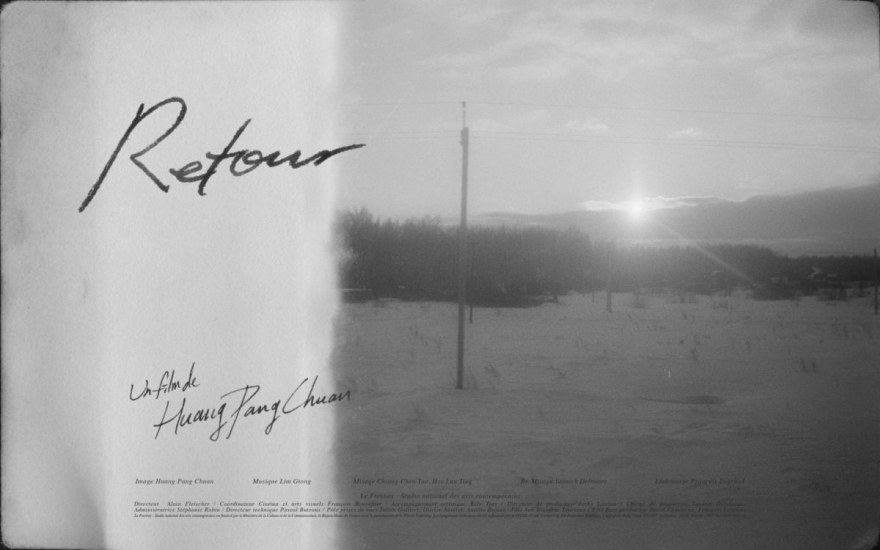Breakfast with Retour (Return)
An interview with Pang-Chuan Huang, director of Retour (Return)
What interested you in the parallel telling of two stories rather than just focusing on a single story?
Every story told in the film comes from my grandfather’s memoirs, some written, others orally passed down, about ten years prior to his death. I am not entirely sure of the veracity of these memories, so I wanted to mix them with my own experiences, between sleep and being awake during a long trip, like a dream I had while riding in a train.
What cameras were used to capture the images of your trip in Retour? Did you want to show more of some particular places than others?
I used 4 cameras: one normal one. And 3 others called “Canon EE medium 17”, which are medium format cameras. They can capture 72 images instead of 36, while using normal 24 x 36 film. This format uses less film, but it’s also symbolic, since it is the format of the silent films. I took 3 of them for the trip because they are amateur cameras, not very solid or stable. In the middle of Siberia, none of them were functioning, but thankfully, I had a fourth one.
Why did you choose the New Year of the Gregorian calendar to make this trip?
The New Year, in all cultures throughout the world, has always been considered as a moment for family reunions, and this goes well with the subject of Retour. That said, making this trip in February, during the Chinese New Year, would not be advisable, especially not by train. There’s a Wikipedia entry describing this phenomenon: “Chunyun”.
Could you tell us more about the war and massacres described by the other protagonist?
Going back to my answer to the first question, I indeed removed dates and places from the story. The two wars in the film are the Sino-Japanese War and the Civil War between the troops of the PPC of Mao and the Kuomintang of Tchang Kai-Chek, which brought about the exile to Taiwan.
The massacre at the end of the film is called the “February 28 Incident” in 1947. At that time, Taiwan had been colonized by Japan, and most Taiwanese spoke Japanese and Taiwanese dialect. But the Chinese soldiers spoke Mandarin and Chinese dialects. They invaded and killed many Taiwanese because of the language and cultural barriers. (See the film by Hou Hsiao-Hsien, A City of Sadness.)
Why did you not want there to be any silences in Retour?
As in my response to the second question, initially, I wanted to do the edit traditionally, meaning sticking all the bits of film together and then making a film print. But to make this film without sound or music was out of the question. Lim Giong, the composer of this film (also the composer of Millennium Mambo and Assassin etc…), and his music helped me enormously, it was a marvellous experience working with him.
Since the shoot, have you taken any other trips?
Yes, I’ve taken many trips. Usually, my projects focus on 3 elements: travel, celluloid, and memory. I am preparing my new film, which will be a trip to my country: Taiwan.
Why do you think we leave, and why do we return?
We leave in order to return!
What sort of freedom would you say the short format allows?
Simplicity can be maintained in a short film. The simplest things are always the best!
Retour is being shown in Lab Competition L4.









